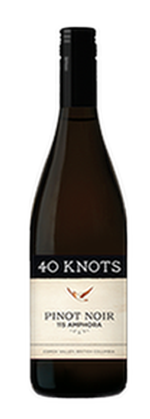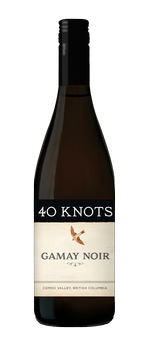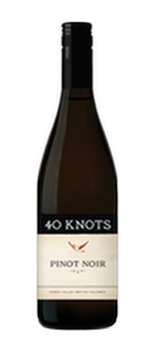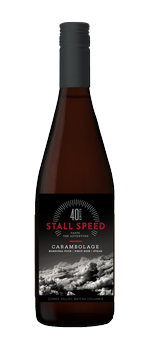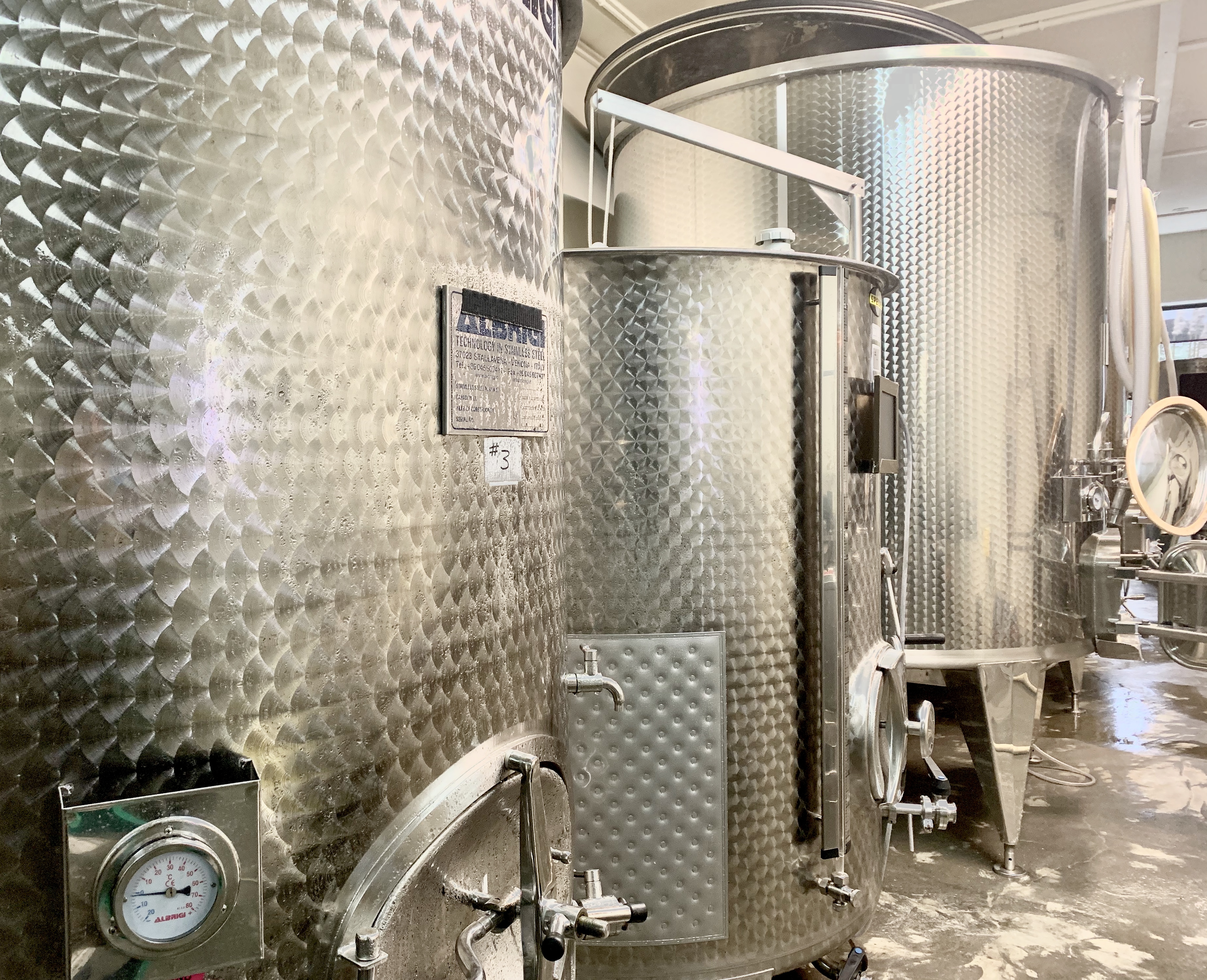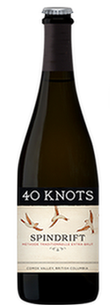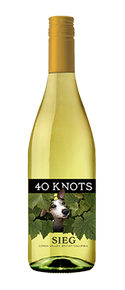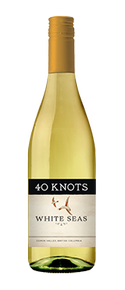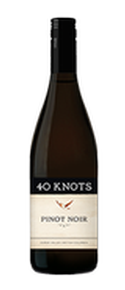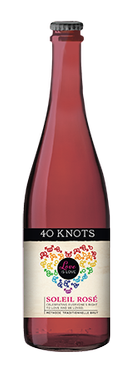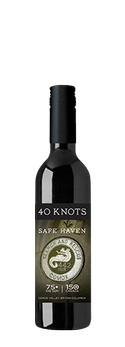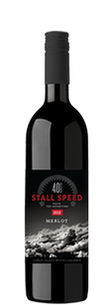Welcome to the Knotty Blog!
Welcome to the 40 Knots Winery blog — our online space where we share the latest news, stories, and updates from our sustainable winery in the heart of Vancouver Island's Comox Valley. At 40 Knots, we take pride in crafting award-winning wines that reflect our commitment to sustainability, community, and local partnerships. Explore behind-the-scenes looks at our vineyard, learn about upcoming events, and celebrate the people and initiatives that make 40 Knots unique. Whether you're a wine enthusiast or simply curious about what we do, join us in celebrating a passion for exceptional wine and sustainable living.
Want to stay more up to date? Sign up for our newsletter and get the news first!
The Swallow's Arrival
The Swallow
(Stelgidopteryx serripennis)

If you've ever purchased a bottle of 40 Knots wine from our cellar door, you may have noticed the Northern Rough-Winged Swallow that adorns our Estate label. The swallow is endemic to our area and frequent our vineyard. Each year we celebrate their arrival because, for us, they are not only our friends but a part of our biodynamic crew. Swallows will only live in areas that surround biodynamic balance and their presence speak volumes that our clean, green vineyard practices are working. The swallow is an excellent bug predator. Unlike other species of birds, they will never harm our grapes. 40 Knots Vineyard is surrounded by farming land and swallows always nest near other farm animals. Next time you're here, perhaps during a guided or self-guided vineyard tour, keep your eyes peeled for swallow birdhouses built to keep the birds safe and give them a home to return to every year.



Swallows are also songbirds, and in maintaining balance it is believed that sound vibrations are important to vine health. Italy has been piping opera out into their vines for many years, and the proof shows that vines closer to the music are the healthiest in the vineyard. At 40 Knots, our version of this is offered not only to our vines but to our guests as well. If you haven't yet had a chance to partake in one of our vineyard terrace Wine Wednesday events, better book now before reservations fill up!
40 Knots is just a stone’s throw away from the Salish Sea. Because our land was created by a glacier, our vines are reaching down through glacier till soil. The rich salt air flows through our vines keeping them aerated, healthy and strong, and the salt air imbeds our oak providing beautiful aging that cannot be accomplished in dry wine regions. While walking the interpretive trail or sipping on our vineyard terrace or balcony overlooking the vineyard, you can hear the swallows singing alongside the sea lion’s barking at the arrival of the new day.
Swallows are an important friend of sailors and are believed to be a good omen. Sailors will often get a swallow tattoo to show off their sailing experience. According to one legend, one swallow symbolizes successful journeys adding up to 5,000 nautical miles, two swallows symbolize 10,000 nautical miles and so on. Another legend is that since swallows always return to the same land each year to mate and nest, the swallow will guarantee the sailor returns home safely. Sailors also believe that if they were to drown, the swallow will carry their soul to heaven.

Awaiting our much-loved swallows, budburst in the near future and the days lasting a little bit longer, you better believe that we're dusting off that patio set!
Introduction to Fortified Wine Tasting
The History of Port and the Fortification of Wine
Origins of Fortified Wine
Fortified wine originated as a solution to a practical problem: preserving wine during long sea voyages. Before modern refrigeration and preservation techniques, wines often spoiled when exposed to fluctuating temperatures, oxygen, and bacteria during transport. Adding a distilled spirit, typically brandy, to the wine stabilized it by increasing its alcohol content and halting fermentation, thereby preserving its flavor and preventing spoilage.
The technique of fortifying wine began in the Mediterranean region, where trading routes spanned long distances. While the exact origins are debated, the practice was documented as early as the 16th century. Portugal, Spain, and Italy were among the first countries to adopt this method, creating distinct styles such as Port, Sherry, and Marsala.
The Birth of Port Wine
Port wine, specifically, is a fortified wine from the Douro Valley in northern Portugal. Its creation is deeply tied to the trade relationship between Portugal and England.
Why Fortification Was Necessary:
During the 17th century, the Anglo-French wars disrupted England’s access to French wines. Seeking an alternative, English merchants turned to Portugal. However, the Portuguese wines often spoiled during the long voyage to England. To address this, winemakers began adding aguardente (a neutral grape spirit) to the wine during fermentation.
The Role of Monasteries:
The earliest documentation of fortified Port-style wine comes from Portuguese monasteries in the late 1600s. Monks had been experimenting with adding spirits to wine to create a sweeter, more robust product, as well as to preserve it.
British Influence on Port:
By the early 18th century, British merchants had formalized the production and trade of Port wine. The Methuen Treaty of 1703 reduced tariffs on Portuguese wine imports to England, further popularizing Port in Britain. English trading families like Taylor, Croft, and Warre established Port houses in Portugal, which still exist today.
How Port Is Fortified
The hallmark of Port wine is its sweet, rich character. This is achieved by fortifying the wine before fermentation is complete, leaving residual sugar in the wine. The process involves:
Fermenting the grape must for a few days.
Adding aguardente to the fermenting wine to halt fermentation.
Aging the fortified wine in barrels or tanks, depending on the desired style (e.g., Ruby, Tawny, Vintage).
Other Early Fortified Wines
While Port is among the most famous fortified wines, other regions developed their own styles:
Sherry (Spain): Fortified after fermentation, producing a range of styles from dry (Fino) to sweet (Pedro Ximénez).
Marsala (Italy): Fortified during or after fermentation, often used in cooking and as a dessert wine.
Madeira (Portugal): Fortified after fermentation, subjected to heat to mimic aging during long sea voyages, resulting in its unique oxidative character.
Who Fortified Wine First?
Determining who first fortified wine is challenging due to limited records, but it is believed that:
Ancient civilizations, such as the Greeks and Romans, may have experimented with adding substances like honey or resin to preserve wine.
Distilled spirits became widely available in Europe during the Middle Ages, paving the way for intentional fortification.
The Portuguese were among the first to standardize the process, particularly in creating Port wine, due to their close ties with England and the challenges of exporting wine.
Why Fortify Wine?
Preservation: To stabilize wine for long voyages.
Enhanced Flavor: Fortification often results in a richer, sweeter product, appealing to consumers.
Trade and Economics: Fortified wines were lucrative commodities, particularly in regions like Portugal and Spain, which relied on exports for economic stability.
Fortified wines like Port became cultural icons, valued for their durability and distinct taste, and continue to be celebrated worldwide for their historical and gastronomic significance.
Join us on December 17th, 2024 to study and taste white, ruby and tawny fortified wines. Alumni grads get to bring a friend for free. If you are an alumni, please call to book in your #2 free. 1-855-941-8810 ext 103
Lessons in Knotty [How to dress for Fall on Vancouver Island]
How to dress for fall on Vancouver Island:
Socks and sandals are a Canadian classic, but why stop there? Throw in a pair of flip-flops—because, honestly, who needs logic when you’ve got style that turns heads and ankles?
Waffle knits are definitely a vibe this season, but make sure it’s a nice merino wool. These magical undershirts layer perfectly over a t-shirt that you already know won’t match, but hey, you’re a fashion rebel.
If you're feeling bold, slip into a wool onesie. Nothing says “I’m ready for anything” like flaunting that onesie underneath a pair of ripped jeans. Bonus points if the holes in the knees really show off your cozy base layer—because how else will people know you're the comfiest person in town?
Toques are essential, and the rule is simple: the more mismatched, the better. You’re not just wearing a hat—you’re sending a message. That message? "Fashion is what I say it is."
Mittens, though not actually needed, should make an appearance. Top them off with a sparkly, oversized ring, because your hands deserve to be glamorous while pretending you’re cold.
Scarves? Oh, you better believe it. Knit them yourself or grab the chunkiest one you can find. Fringe is mandatory—it adds flair and doubles as entertainment on a windy day.
Insulated vests: they might not actually keep you warm, but they’re perfect for showing off your 2023 lift pass. Nothing says, "I skied once and I’m not over it" quite like a lift ticket permanently attached to your zipper.
And remember, never use an umbrella. We don’t care if it’s raining sideways, you’re on Vancouver Island. You embrace the drizzle. Umbrellas are for tourists, and you’re here to prove that getting soaked builds character!
Grape Vine and Fruit Tree Pruning
Grape Vine and Fruit Tree Pruning
The ideal time for Grape Vine and Fruit Tree Pruning is when they are dormant, to give them their best chance at. producing for you. What you do this winter will affect your fruit yield for the next two years.
At 40 Knots, we listen to our customers. Our service goes beyond serving a glass of wine. We are proponents for traditional responsible farming, and nothing gets us more excited than chatting with a fellow farmer. Whether you own a backyard or many acres, we love to help. Farming is our passion. Caring for the environment and leaving it better than what we found it, is in our blood.

A few years ago, we started delivering free workshops to those in our community. With a Viticulturist and Aborist on staff, you are in great hands. I think we have a total of about 120 years of experience in our small Crew. Our workshop leaves you feeling confident. And we leave feeling great about our contribution to farming on Vancouver Island. We love hearing from those that attended about their great harvest and increase in yields and quality of fruit.
If you missed our annual workshop, here are a few Cole’s notes:
Fact: No fruit grows on old wood. If you want more fruit, you need to prune.
Fact: A vigorous grapevine can produce 150-200 feet of linear new growth a year.
Fact: Pruning is best when trees and vines are dormant. In Vancouver Island, it is usually after Christmas.
Fact: To prepare for dormancy ensure you supply food and water to protect
Safety Equipment: Buddy up if you are needing to use a ladder. Always wear gloves, eye protection, and proper footwear.
Tools: Use sharp tools and if you notice any disease, use peroxide to disinfect your tools before moving to another branch or vine. You can actually pass disease if you don’t do this.
Design: Choose a design, and don’t be scared. Especially with vines. In some countries, they are considered a weed and they are very resilient. You can find many designs on the internet. I would list them all here, but it is a blog after all.
Age: Young trees should be at least 3 years old before pruning.
Canopy: Consider that you will need sunlight and protection, and this is where canopy management comes in. You will be a good balance of vegetative growth to ripen the crop yet sufficient fruitful buds to provide adequate yield.
Suckers and Dead Wood: Always remove suckers and deadwood. If there is only one thing you do for your trees and vines, this is the one.
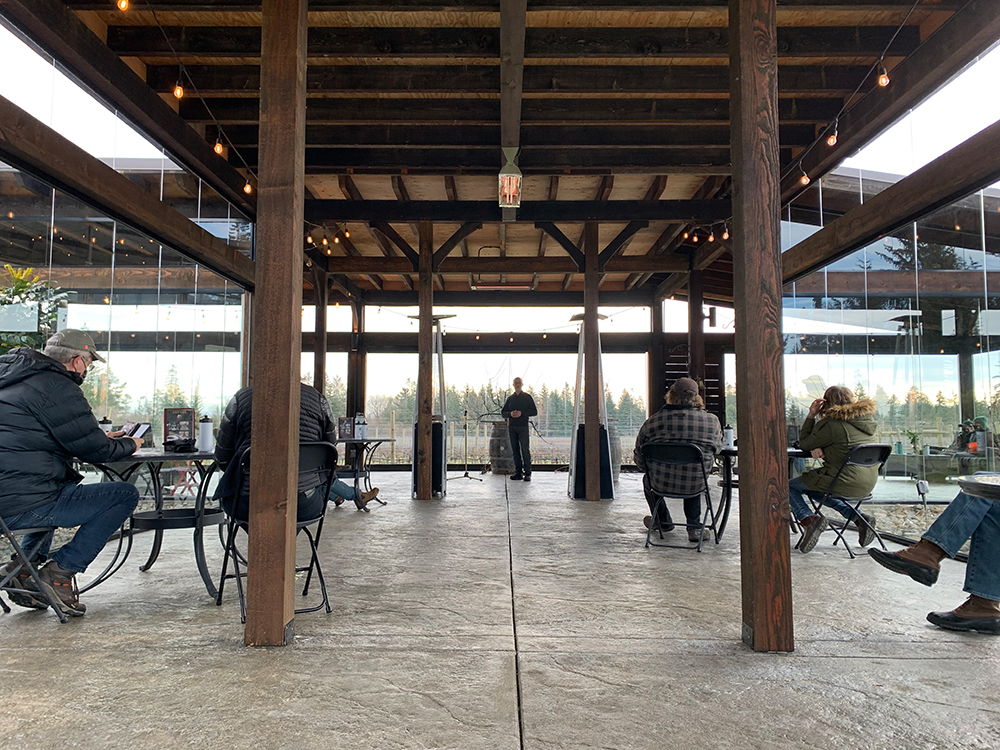
Meet Andy on Youtube as he explains apple tree pruning:
Sign up to 40 Knots newsletter HERE so you are the first person to hear about any community workshops.
Sign up to be a 40 Knots Farmer during our harvest HERE.
Carbon Emissions and Net-Zero
Carbon Emissions and Net-Zero

This is a big, big topic. And we are not experts. But we do know, that we have choices. 2020 has taught us many things. We consume less, we buy what we need, and we buy Local first. When purchasing, we consider the carbon footprint of the goods. (What is the impact on those plastic forks shipped here from a factory in China?)
What does it mean to be Net-Zero? There is a lot of information out there. We chose to be a Gold Certified member of Green Step Tourism for their guidance and because of their very tough certification process, which assists us to be continuously diligent. We are not experts, but we like what we have experienced since becoming members in 2016.
And we continue to research and learn. I came across this blog. Sadly, I don't see Canada mentioned.
World Resources Institute
And then I found a calculator! Right or wrong, I used this one. I was super happy to see how low my carbon (paw) footprint was but was shocked to see how high our country's carbon footprint was.
Carbon Footprint Calculator for homes
If 2020 showed us anything, it showed how we could use less and use smarter.
And so in 2021, I commit to doing my part.
I Declare a Climate Emergency
40 Knots Winery has signed up to Tourism Declares, an initiative that supports tourism businesses, organizations, and individuals in declaring a climate emergency and taking purposeful action to reduce their carbon emissions as per the advice from The Intergovernmental Panel on Climate Change (IPCC) to cut global carbon emissions to 55% below 2017 levels by 2030.
Like all signatories, we have committed to the following five actions:
1. Develop a ‘Climate Emergency Plan’ within the next 12 months, which sets out our intentions to reduce carbon emissions over the next decade.
2. Share an initial public declaration of our ‘Climate Emergency Plan’, and update on progress each year.
3. Accept current IPCC advice stating the need to cut global carbon emissions to 55% below 2017 levels by 2030 in order to keep the planet within 1.5 degrees of warming. We’ll ensure our ‘Climate Emergency Plan’ represents actions designed to achieve this as a minimum, through delivering transparent, measurable, and increasing reductions in the total carbon emissions per customer arising from our operations and the travel services sold by us.
4. Encourage our suppliers and partners to make the same declaration; sharing best practice amongst peers; and actively participate in the Tourism Declares community
5. Advocate for change. We recognize the need for system change across the industry to accelerate a just transition towards carbon-free tourism.
The Crew at 40 Knots Winery
Are you a Tourism Business? Join us HERE
Grapevine Dormancy
Grapevine Dormancy
*FREE community pruning workshop. See below for further information*
At the dawn of a new decade, we welcome a fresh start in the 40 Knots Vineyard. With 2019 behind us, we look forward into 2020 with revitalized hope, energy, and enthusiasm for a fabulous new vintage. Just like winter hibernation, the 40 Knots vines are in their dormancy stage and await the new spring sun. Winter dormancy occurs after the last autumn leaf has fallen and carries forward until early Spring.
Shorter winter days kick-off two phases of dormancy.
Endodormancy: (Greek word endo meaning inside) during this first stage, the grapvine become cold hardy. The plant growth regulators inside the bud prevent each grapevine from growing, even in favourable environmental conditions. Endodormancy is usually complete by the end of December.
Ecodormancy: An external force that follows environmental conditions. In the Northern Hemisphere, the ecodormancy stage starts around February. In this stage, the vines await higher temperatures to proceed with budburst. With ecodormancy and climate change, vine growers must be vigilant to monitor low temperatures as to not kick off budburst too soon. This is where our #coolclimate region in the Comox Valley has a leg up!

With the vines seemingly lifeless and naked without leaves, the activity underneath the soil is charged in preparation for the new year with energetic vines sending out new roots. This “root flush” (think tiny hairs at the bottom of carrots and beets) reaches downward in search of nutrients from the soil. Internal starchy carbohydrates build inside the roots, trunks and cordons in autumn and until the first frost, and this stage is critical for proper flower, leaf and bud grapvine growth development for the following season.
Above the soil, the vines will dehydrate themselves as water contracts and glides into intercellular spaces. This phase almost steels the vines from the inside out, avoiding freezing during these chilling winter temperatures. Sugar and protein compounds come together to bind water, serving as cryoprotectants. So strength DOES come in small packages!
Join us for a FREE community pruning workshop
Calling all viticulturists, farmers and outdoor enthusiasts interested in learning vineyard pruning methods for both cane and spur vines. We are hosting a complimentary community pruning workshop on February 1st from 1-4pm at 40 Knots Winery. Click HERE to RSVP.

Unable to attend? Read about how much fun we had in my next blog post where I discuss winter grapevine pruning.
Happy New Year, from the crew at 40 Knots and me,
-Megan
Amphorae, Oak, Tank
Amphorae, Oak, Tank
Aging wine in the cellar before bottling is a process that takes patience, diligence and the knowledge of one’s terroir. Grapes grown in cooler climate regions will need a different aging process than those from warmer climates. The trick for quality though is to know which vessel suits which varietal, and how long each one needs to rest before bottling. In the 40 Knots cellar, we age our wine in three different vessels: Amphorae, french oak and stainless steel tanks.
Amphorae
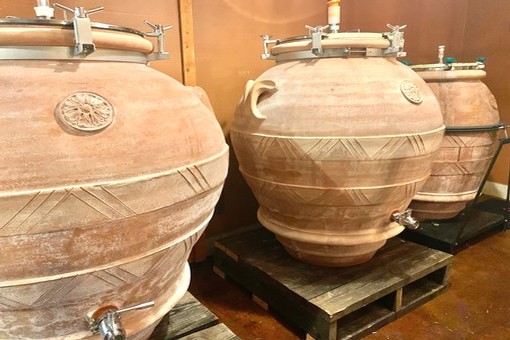
Remnants of these ceramic style terra cotta pots have been spotted as far back as 6000 BC, with archaeologist having found remains in the Republic of Georgia. Once the amphorae reached the Mediterranean, ancient Greek’s and Romans used them as the main transportation and storage of wine. A huge benefit of amphorae is the stabilization of temperature through exceptional thermal insulation. With a porous surface, the wine stabilizes through slight oxidation; double the oxidative effects of oak! In today's wine world, there has been an insurgence of amphorae in wineries that farm organic or biodynamically. In following this biodynamic route, amphorae pots found in our 40 Knots cellar have been growing in numbers over the last year. All three of our amphorae come from Artenova in Florence, Italy.
40 Knots wine aged in amphorae:
Oak Barrels
The oak barrel is thought to be created by Spanish Celts around the fifth century BC. Embracing oak over amphorae around the 2nd century AD, the Romans and colonizing Europeans chose this transportation method for small goods and liquids. Most of the wine oak barrels that you’ll see around the world nowadays typically come from five main forests in central France or California and some of the eastern states. Wine flavors showcased from oak aging are spices, earthiness or a toasty characteristic and sometimes sweeter flavors of vanilla, caramel, and butterscotch. The barrels that you will find stacked in the 40 Knots cellar are from various areas in France.
40 Knots wine aged in oak:
Stainless Steel Tanks
With the creation of stainless steel in the early 20th century, winemakers began the journey of aging wine in stainless steel tanks. Unlike oak, a wine created in these airtight, neutral vessels imparts no flavors and undergoes no oxidation. Wine flavors formed to display the truest nature of the fruit, boasting crisp, clean and fresh characteristics. The 40 Knots cellar is filled with Italian tanks from a company called Albrigi out of Italy.
Look for these crisp, fresh wines in our portfolio. Unlike some other terroirs, there is no need to oak these beautiful whites as they are naturally full with lots of juiciness, and far from flat.
Celebrate New Year's Eve, or any other time that demands emphasis of flavor on the celebration, with our "in bottle" fermentation, French Traditional style bubbly!
Gift baskets made to order or pick one up today in our store. Got your Christmas cards out yet? Pick up one of our gift cards or we can e-send off! No expiry and may be used for purchases, vineyard tours, premium tastings and picnics.
Back by popular demand, check out our gift of Pinot box - Pinot Noir sale
!!!HUGE SALE ALERT!!!
From December 20 to December 24, you'll receive $25 off a case of wine! Just mention "I read about it on Megan's Blog"
Give us a call for Canada wide shipping options 855-941-8810, or visit us in the tasting room today.

Christmas hours: closed December 24 at 3pm, CLOSED ALL DAY December 25 & 26
New Years hours: closed December 31 at 3pm, CLOSED ALL DAY January 1 & 2
Thanks for following my blog posts for 2019! I look forward to picking up again next year in 2020. Please email me if there are topics you would like me to blog about, or if you ever have any questions about the blog. Or even better yet, stop in and see me at the winery!
To Age Wine or Not to Age, That is the Question
To Age Wine or Not to Age, That is the Question
“Just like a fine wine, you keep getting better with age”. We’ve all seen this Birthday Card for sale on the rack. The common misconception is that all wine surely does get better with age. This statement, however, is only true for a small number of wine types found around the world.
It is estimated that 90% of the wine is meant to be enjoyed within a year of production, and 99% of wine within 5 years.
For some of you, the goal is to drink wine when in the prime of its life. For most of you, it’s as soon as you bring it to an awkward family dinner party. Back in the day, the Old World regions (aka. Europe) were notorious for releasing wine that demanded a minimum 5-10 year lay down (think astringent, high tannin Barolo’s). Nowadays, you will find more and more European styles following New World regions (aka. anywhere that isn’t Europe) with wine that is ready to drink now.
Studies have shown that the average person waits 21 minutes between purchasing and opening a bottle of wine.
Tannin and acidity are structural elements that act as naturally occurring preservatives, allowing the wine to evolve without falling apart. Sugar and alcohol also factor in, but the body must be supported by tannin and acidity.
Because white wine grapes rarely go through skin contact after harvest, the lack of grape skin tannin is your first clue that white wine doesn’t have much age-ability (with the exception of Orange Wine). Many Chardonnay’s, however, have seen some barrel aging. This adds tannin from the oak barrel and creates the potential to lay that bottle down for several years. Because of current wine trends, an unoaked style of Chardonnay is quite popular in today’s market.
40 Knots White Wine
With all of our white wine grapes grown right here on Vancouver Island, our crisp and dry style white's are a perfect pairing with anything that comes out of our local ocean.
USUALLY BEST IN THE FIRST THREE YEARS
ONE FOR YOU AND FIVE FOR THE CELLAR, ENJOYABLE EVERY YEAR FOLLOWING
40 Knots Red Wine
Unlike wine from warmer climate regions, our estate reds are light in body and have soft tannins and moderate acidity.
STICK THIS ONE IN YOUR CELLAR!
Drinkable now and try on each year for the next 6-8 years. Prime is expected 3-5 years after vintage year.
DRINK NOW OR SAVE FOR MANY, MANY YEARS.
Sparkling bubbles will become very refined and soft with a baked brioche flavour, Trie Emily will be soft and deeply luscious, drink Safe Haven in 10 years while you sink deeply into your armchair and reminisce.
Stall Speed Collection Red Wine
These reds boast grapes coming in from the Okanagan Valley where the climate is slightly warmer.
DRINK NOW!
At 40 Knots we have already done the aging process for you, with vintages ranging between 2008 and 2011.
If you DO decide to lay something down for a period of time, be sure that it is away from sunlight, vibrations, and temperature fluctuations. A cool basement emulates a cellar, so this is your best bet.
Ready to cross some Christmas gift purchases off of your “to-do” list? Visit us in the tasting room and get your custom gift basket- wrapped with your choice of goods, to your price point.
To barrel or not to barrel, to amphorae or not to amphorae: what are the different aging techniques BEFORE a wine is bottled? Stay tuned for my next blog post.
The Vineyard Floor at 40 Knots
Wine, Wind, Sea & the Vineyard Floor
The life cycle of the grapevine can be discussed at great lengths. From budburst to harvest, the hours and energy put into vine, canopy and fruit management are extensive. Some of that attention, however, should be directed beneath our feet to the life found along the vineyard floor. This important cover crop has profound significance for the vineyard ecosystem, productivity and inevitably, wine quality. Here are just a handful of native and foreign plants, and even weeds, that help our 40 Knots Vineyard work with Mother Nature to achieve our increasing biodynamic farming practices.
White Clover (Trifolium Repens)
Chances are, you’ve seen this shamrock shape not only in a vineyard. Incredibly common in North America, this herbaceous perennial is a part of the bean family. Eventually, within its life cycle, a small white flower will draw in many bumblebee visitors, which are powerful pollinators. Into maturity, the white flower will begin to turn pink. Its ground coverage helps balance nitrogen levels and maintain soil health. If you happen upon one with four leaves instead of three, some would say you’d be blessed with the luck of the Irish!
Dandelion (Taraxacum Mongolicum)
The Taraxacum Mongolicum has been used in Eastern medicine for thousands of years, providing many health benefits. When aged, how beautiful the feathery filaments appear when caught up in a summer’s breeze. Kind of nostalgic, isn’t it? For the vineyard though, this perennial's wide-spread root systems are amazing for loosening soil and pulling up calcium from the depths. Grape vines require proper aeration and drainage to produce quality fruit set. Less is more when it comes to water!
Hairy Bittercress (Cardamine Hirsute)
This little white flower is part of the mustard family. In this particular photo, you can see the long slender seed pods getting ready to burst and spread themselves along the vineyard floor. Flourishing in damp, sunny and loose soil conditions, the vineyard is just the spot for the annual Cardamine Hirsute to thrive. It is also edible. It can add a little zip to your salad with peppery flavours, a perfect 40 Knots Pinot Noir pairing! Just like all other types of plants within the mustard family, this one is loaded with nutrients. It’s a spring weed, so as temperatures increase, the sight of them decreases.
Fescue Grass (Festuca Arundinacea)
The grass is basically the bodyguard of the vineyard, its main goal is to protect. The grass' heavy root system safeguards the soil from eroding and compacting. In the heat of the summer, it will enter dormancy and turn brown. This is favourable because it no longer competes for water. It also reduces excess moisture, avoiding unwanted heavy vine vigor.
Where this foliage thrives, so do bugs that feed our vineyard animals.
Biodynamic law teaches that everything has a purpose. With the knowledge of this, we can truly revel in the bounty that is found all around us.
“Look deep into nature, and then you will understand everything better.” –Albert Einstein.
With Spring upon us, we invite you to partake in one of our newly introduced guided vineyard tours. While you’re sipping our 40 Knots wine amongst the vines where it all began, see if you can find some of these vineyard helpers in between your feet!



